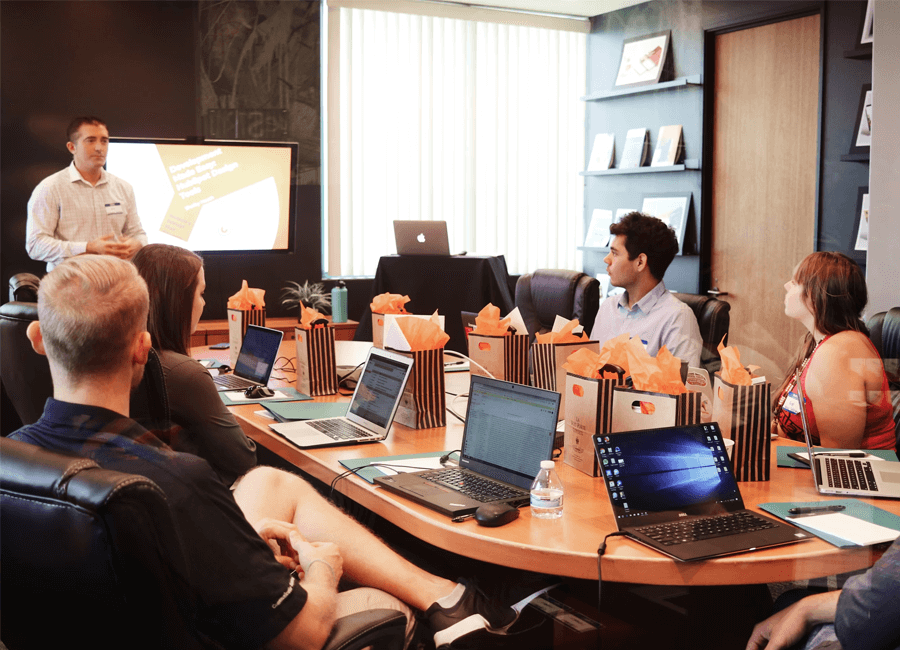Insight communities are valuable pools of insight generation opportunities. As online research channels go, creating and managing a successful insight community is one that requires more effort, resources and time than most. When created and managed well, these research platforms are accessible to both participants and researchers at all hours of the day, resulting in ample opportunity for discussions, explorations and testing.
So how can insight teams ensure their insight communities are successful? By recruiting and managing members in the best ways possible.
Make the Insight Community as Attractive as Possible
When designing the research experience, it’s important that insight teams consider the impact it will have on research participants. Will the research be interesting? Is it going to be delivered in an engaging way? Will the research experience be fun or more professional? Is the platform the community hosted on easy to navigate or will researchers need to design signposts to make sure participants find the research?
| Tweet This | |
| How do insight teams recruit and manage insight community members for the best chance of a successful research experience? |
All of these questions and more are crucial to the success of the insight community and the recruitment and management of its members. If this market research opportunity isn’t attractive, then insight teams will struggle with research recruitment, and those that do find their way into the community will either not be able to take part in the research (if they can’t find the tasks) or not be inclined to take part (if the research isn’t presented in an interesting or engaging way).
So let’s make the research fun, easy to use, and engaging overall. Insight communities are the easiest to present in this way, as they can host immersive, safe and comfortable experiences and hold opportunities for discussion even outside of scheduled tasks – this communication outside of tasks can help researchers build a sense of community in a more organic way, which is crucial to the discovery of unexpected insights.
There is a Power that Comes from Understanding your Audience
Understanding the audience insight teams will be researching is for is crucial in all stages of the experience. Different research participants will respond better to different things and will prefer different channels to communicate through, and understanding this is the key to recruiting the right participants for the research project – this is where market segmentation comes into its own.
A community of fully-profiled and segmented research participants all alongside fun and engaging research tasks that are tailor made to engage them and encourage them to share their personal data is a recipe for the perfect insight community – something most insight teams work hard to produce because they know that this is the way to gain accurate and relevant insights.
Consider the tone you use across all your communications, we’re not talking to numbers, and we’re not trying to recruit data. We are working with the most unpredictable factor in all of market research: human people. So designing human-first experiences, tasks and communications will boost an insight teams’ chances of recruiting and managing the best insight community members.
Recruiting the right participants first time around is tough. It will be the best thing to do if insight teams are looking to take the quickest route to success, but no one has ever recruited a full community of all the right respondents (relevant to the research topic and brand, and full engaged in the research process) first time. However, because of this we have a number of tips to help us find the right people quicker and filter out those that aren’t.
Going back to building up a sense of community, making sure to recruit the right people early on works wonders for the recruitment of more research participants later on. If the community is seen as fun and even flourishing as a hive of collaborative activity, recruiting more participants later on in the research experience will be easier, their integration into the community will be seamless, and they shouldn’t require as much management through moderation.
Moderation as Participant Management
Active moderation is key to managing an insight community, both inside of research tasks and outside of scheduled research. Now this doesn’t mean that insight teams have to be on call 24/7 to monitor and make sure people are behaving, there are ways of moderating to make sure they behave themselves while having fun in the insights community even after work hours are over.
For example, having a researcher present as a moderator during working hours can be enough of a deterrent. The researcher can look out for any unacceptable behaviour and serve out warnings or even delete them from the insights community entirely if the behaviour persists during those hours, and review the activity that happened overnight to do the same the next day.
Secondly, having a set of rules outlined before the participant joins the community is useful too. Insight teams do need participants, but only if they’re going to be of use and not cause disruption at any point during the research experience. So, putting the rules in a screener survey for prospective participants to agree to before they enter the community can be a lifesaver from the beginning – any participants who do end up breaking a rule or two can then be justifiably kicked out of the research experience and will hopefully serve as an example to others who might have been getting too comfortable.
Lastly, moderating discussions (whether inside or outside of a scheduled research task) to encourage productive discussions and reward good behaviour helps participants learn exactly what is expected of them within the community, and they will then replicate that when moderators are off duty in exchange for similar encouragements and chances for rewards.
This communication works wonders for building up relationships with participants. The more contact between participants and the insight team, the better the relationship will be and the more engaged all parties will be too.


















